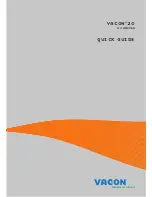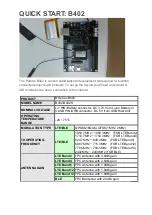MPC563XM Reference Manual, Rev. 1
Freescale Semiconductor
411
Preliminary—Subject to Change Without Notice
Chapter 14
Interrupt Controller (INTC)
14.1
Information Specific to This Device
This section presents device-specific parameterization and customization information not specifically
referenced in the remainder of this chapter.
14.1.1
Device-Specific Features
•
191 peripheral interrupt request sources
•
165 reserved positions
•
8 software interrupts
•
4-byte offset between vectors
14.1.2
Device-Specific Register Information
•
53 Priority Select Registers for a total of 364 interrupt vectors
•
112 reserved interrupt vectors
14.2
Introduction
14.2.1
Module Overview
The interrupt controller (INTC) provides priority-based preemptive scheduling of interrupt requests. This
scheduling scheme is suitable for statically scheduled hard real-time systems. The INTC is optimized for
a large number of interrupt requests, up to 512. It is targeted to work with a Power Architecture Book E
processor and automotive powertrain applications where the ISRs nest to multiple levels, but it also can
be used with other processors and applications.
For high priority interrupt requests in these target applications, the time from the assertion of the interrupt
request from the peripheral to when the processor is performing useful work to service the interrupt request
needs to be minimized. The INTC supports this goal by providing a unique vector for each interrupt
request source. It also provides 16 priorities so that lower priority ISRs do not delay the execution of higher
priority ISRs. Since each individual application will have different priorities for each source of interrupt
request, the priority of each interrupt request is configurable.
When multiple tasks share a resource, coherent accesses to that resource need to be supported. The INTC
supports the Priority Ceiling Protocol for coherent accesses. By providing a modifiable priority mask, the
priority can be raised temporarily so that all tasks which share the resource can not preempt each other.
Multiple processors can assert interrupt requests to each other through software setable interrupt requests.
These same software setable interrupt requests also can be used to break the work involved in servicing an
interrupt request into a high priority portion and a low priority portion. The high priority portion is initiated
by a peripheral interrupt request, but then the ISR can assert a software setable interrupt request to finish


















